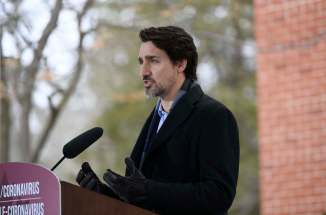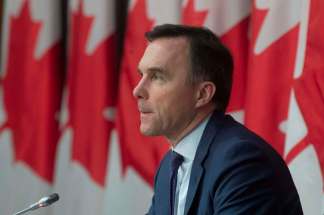Wage subsidy the cost of doing business
Read this article for free:
or
Already have an account? Log in here »
To continue reading, please subscribe:
Monthly Digital Subscription
$0 for the first 4 weeks*
- Enjoy unlimited reading on winnipegfreepress.com
- Read the E-Edition, our digital replica newspaper
- Access News Break, our award-winning app
- Play interactive puzzles
*No charge for 4 weeks then price increases to the regular rate of $19.00 plus GST every four weeks. Offer available to new and qualified returning subscribers only. Cancel any time.
Monthly Digital Subscription
$4.75/week*
- Enjoy unlimited reading on winnipegfreepress.com
- Read the E-Edition, our digital replica newspaper
- Access News Break, our award-winning app
- Play interactive puzzles
*Billed as $19 plus GST every four weeks. Cancel any time.
To continue reading, please subscribe:
Add Free Press access to your Brandon Sun subscription for only an additional
$1 for the first 4 weeks*
*Your next subscription payment will increase by $1.00 and you will be charged $16.99 plus GST for four weeks. After four weeks, your payment will increase to $23.99 plus GST every four weeks.
Read unlimited articles for free today:
or
Already have an account? Log in here »
Hey there, time traveller!
This article was published 31/03/2020 (2089 days ago), so information in it may no longer be current.
For people who test positive for the novel coronavirus, the last thing on their minds is the long-term economic future of Manitoba and Canada. It’s understandable — more than that, it’s essential — that the primary priority be physical health.
But the economic health of our province and our country is also a critical matter. While health-care professionals push the upper limits of their high calling to minimize human suffering and deaths, politicians are charged with applying critical care to the economy. The goal is to deliver appropriate treatment now so the economy returns to fiscal health as quickly as possible when the wretched virus finally retreats.
The massive federal wage subsidy detailed on Monday by Prime Minister Justin Trudeau is a level of government intervention that, until three weeks ago, would have been considered unthinkable.

The federal package is particularly welcome in Manitoba, where substantial economic support has not been forthcoming from the province for people devastated by business closures and layoffs. The Pallister government has made regular announcements of support that is narrowly focused: free online mental health care, freezing rent increases and evictions, subsidizing daycare for health workers and delaying the planned cut to the provincial sales tax.
But when it comes to repeated demands for direct economic relief, Premier Brian Pallister has argued the federal government should be the primary source of financial support for economic victims of the virus.
All business, charities eligible for wage subsidy

Posted:
OTTAWA - Businesses of any size that have seen sharp and sudden drops in revenues due to COVID-19 will be eligible for a new federal wage subsidy program, the federal government said Monday, just as it signalled more help for some of the country's major employers.
Wage subsidy details to arrive Wednesday

Posted:
OTTAWA - Canadian businesses desperate for details about the federal government's promised wage subsidy program will have to wait a little longer for answers.
Ottawa finally acted, and in a big way, offering a 75 per cent subsidy on wages for any Canadian company, charity or non-profit that has seen its revenues drop by at least 30 per cent due to COVID-19. Mr. Trudeau asked companies that get the subsidy to rehire workers laid off over the last two weeks, and to ensure that all the money through the program goes to employees.
Wages covered by the subsidy will be capped at $847 a week. The extensive package came after Mr. Trudeau’s original proposal of a 10 per cent subsidy was dismissed by business and labour groups as puny to the point of being inconsequential.
Responding to the pandemic has shredded Ottawa’s previous priorities. As recently as March 7, federal Finance Minister Bill Morneau maintained that lowering the federal debt-to-GDP ratio was the goal. The Liberal government was then being criticized because the forecast $19.8-billion deficit had grown to $26.6 billion. That now seems minuscule compared to the federal bailout package currently valued at more than $200 billion.
If it’s any reassurance, a survey shows Canada’s spend-heavy reaction is in line with measures in other countries. The U.K. is supporting its businesses with about C$600 billion in loans and grants. France has pledged a C$70-billion aid package for businesses and will guarantee C$300 billion in loans. The United States passed a US$2-trillion stimulus package.
Taxpayers who feel alarmed about being saddled with such a sharp increase in government spending should consider the alternative. Without the massive financial injection, thousands of more businesses would close, millions more workers would be unemployed and the resulting economic devastation could be deeper and last longer.
COVID-19 has shaken the economic foundations of this country, but the virus will run its course. The current intervention in the economy, although extreme, is a government’s attempt to build an emergency bridge to return the country to previous prosperity.
In this case, the cost of doing business — or, more particularly, the cost of being able to continue doing business — is $200 billion.










